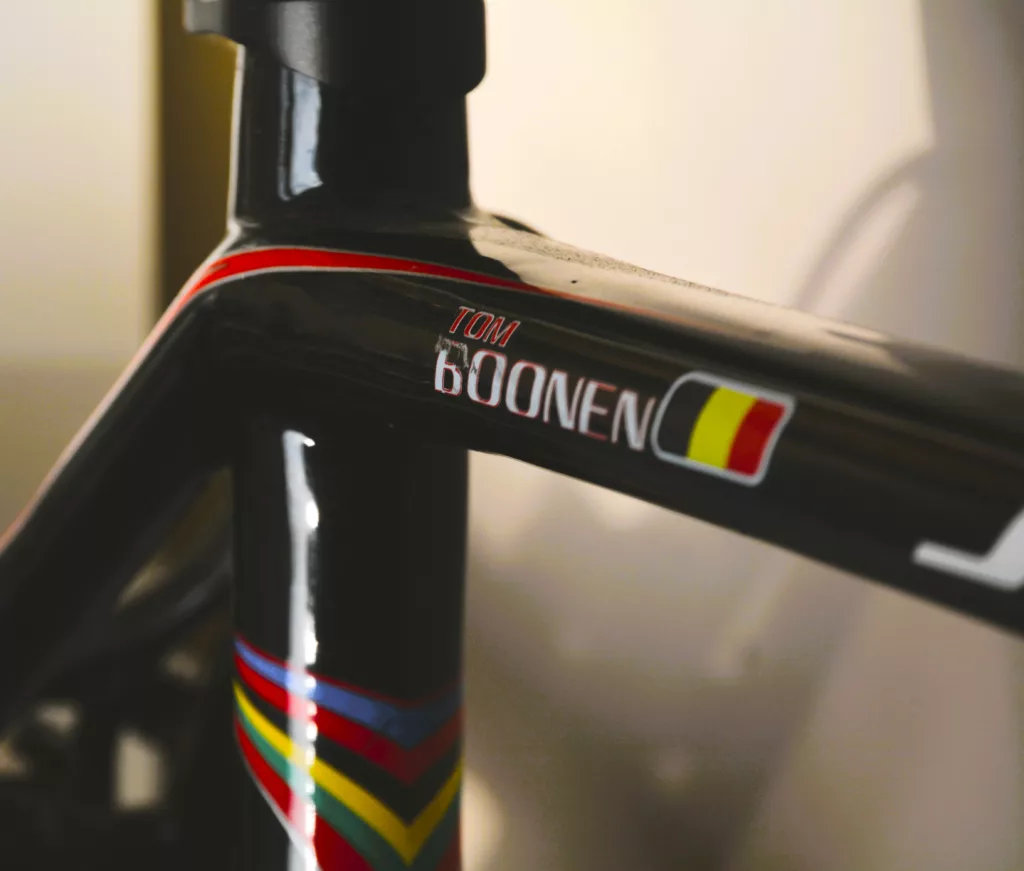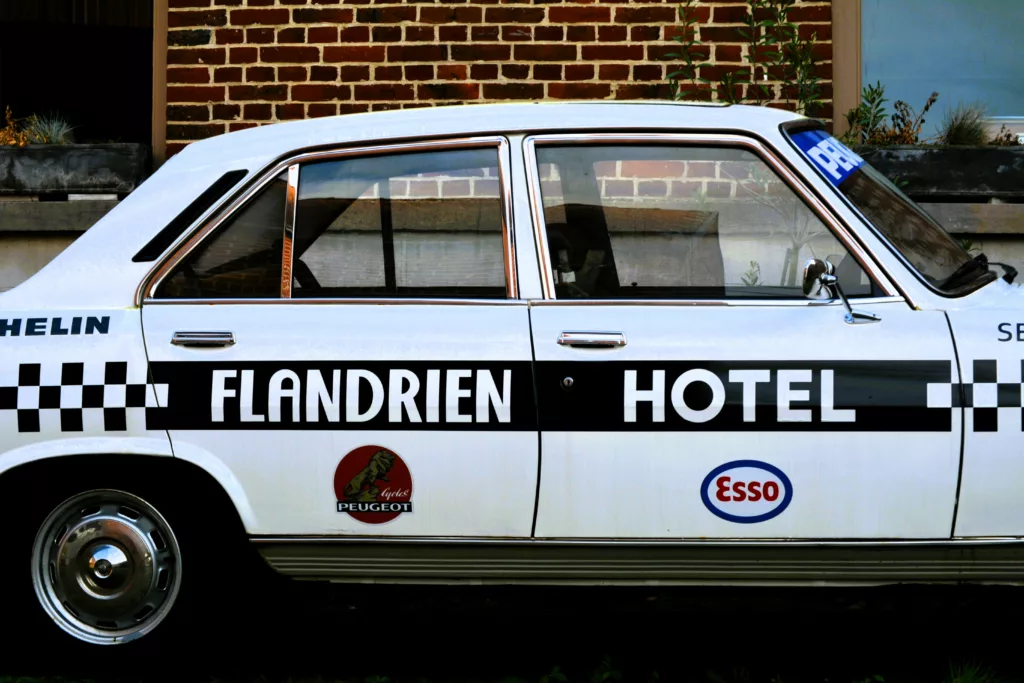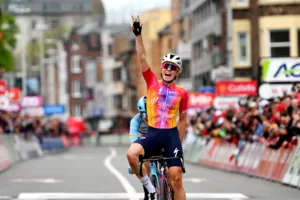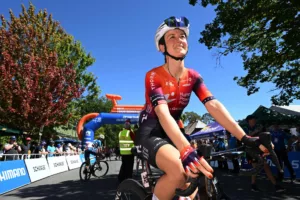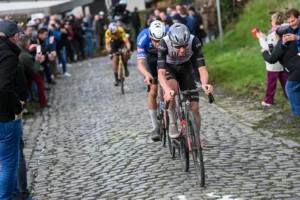Flanders is, for many, the home of cycling. Most will be drawn to the Spring Classics for the period of the year where the races come thick and fast. Almost every other day there is another contest as everything gradually winds up to the pressure cooker of the Flemish Cycling Week. Technically longer than a week these days and with a few modern changes, the big races lead from Brugge-De Panne to E3 Harelbeke, Gent-Wevelgem, Dwars Door Vlaanderen and finally, the big one, the Tour of Flanders. If you want to fit in with the locals, you’ll start calling it De Ronde (van Vlaanderen) and soon you’ll get sucked along with all of the yellow and black flags on display.
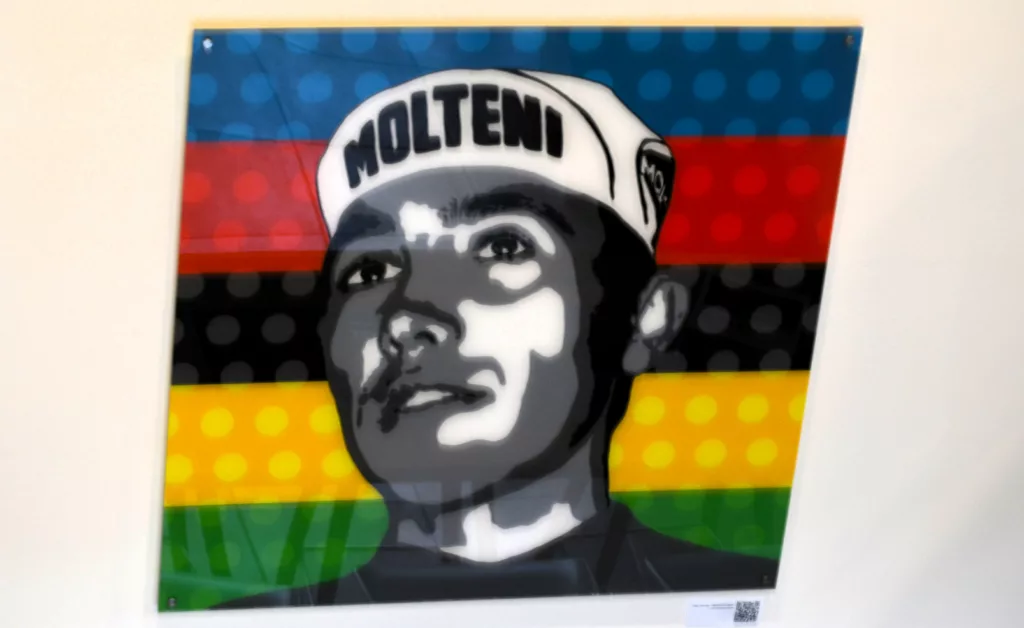
Cyclocross in Flanders & the Koppenbergcross
There is, however, another time of the year when Flanders is a hubbub of cycling action. It’s when the Autumn leaves start to turn into the bleak, cold, grey Winter. This time, the road bikes are swapped out for the thicker, gnarlier bikes of the cyclocross racer. The deep tyre treads that are an anathema to the road cyclists are necessary in order to just get around the courses. Conditions vary but like holding up a painter’s chart, the colours go from the green of grass, through various shades of brown offered by the mud, the orange of clay and the yellow of sand. Few riders truly excel across all conditions and there are an even smaller number who somehow make the conditions look almost easy.
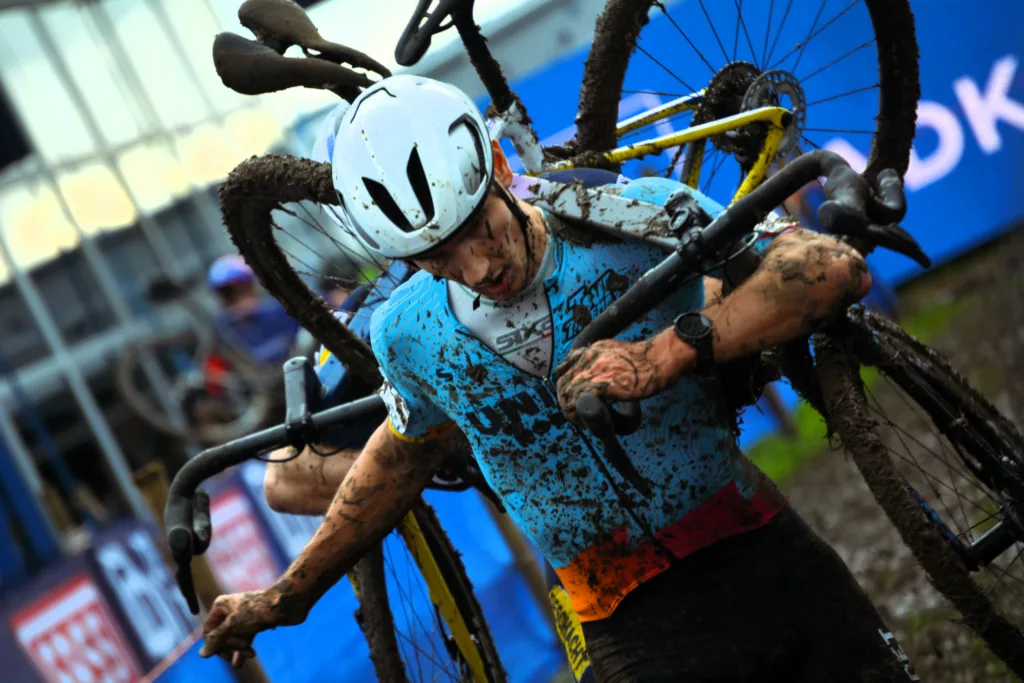
We are currently right at the end of the cyclocross calendar, after all the biggest riders have contested the same patches of mud in various locations across Belgium and the Netherlands on a near-daily basis during the Kerstperiod. At the time of my visit, the European season was just beginning and I was lucky enough to be able to visit the Koppenbergcross. Set mostly on the farmer’s field on the hill, the riders had to go from a standing start straight into a sprint up the legendary Koppenberg. A climb that was so brutal that it was taken out of the Tour of Flanders for many years after an incident where the race director ran over the grounded bike of the struggling race leader Jesper Skibby in 1987.
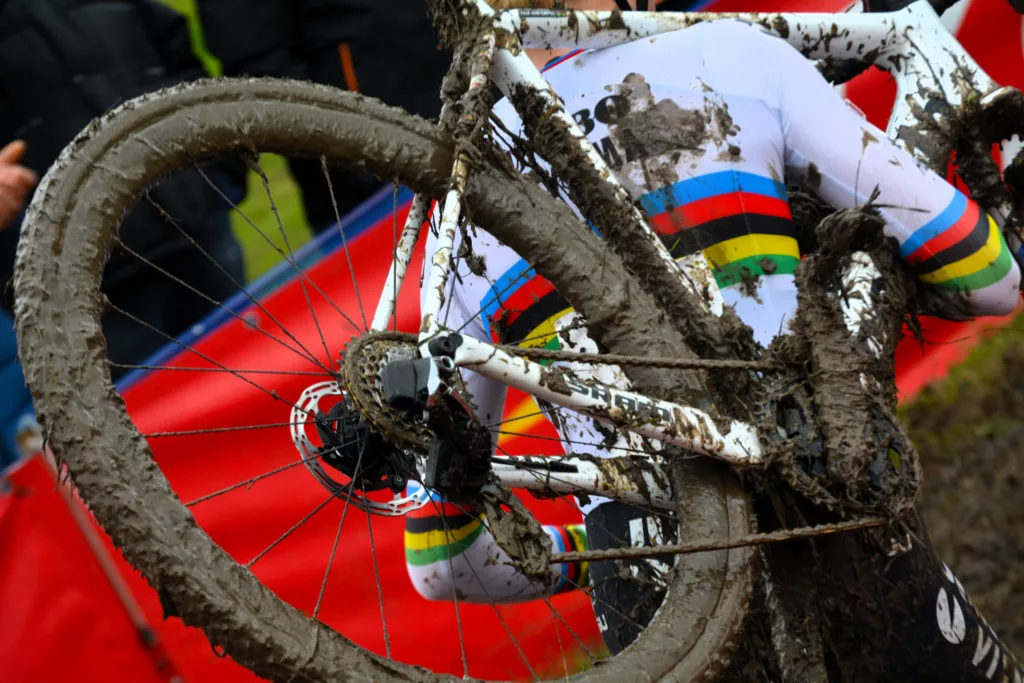
A tough course is laid out for the riders once they crest the Koppenberg as they very gradually work their way back down the hill for another ascent of the cobbles. Conditions were far from easy in this year’s race. Sloppy mud across all of the course meant it was hard going. A normal women’s cyclocross race will see them do roughly 5-6 laps. Here they were able to do 3 laps, such was the slow conditions. The men were similarly hindered. World Champion Fem van Empel made the women’s race a foregone conclusion, winning by a comfortable margin of nearly 2 minutes over Denise Betsema. The men’s race saw closer racing with youngster Tibau Nys able to hold off Lars van der Haar, Eli Iserbyt and Brit Cameron Mason. The quartet were within 40 seconds of each other by the line in a great bit of early-season racing.
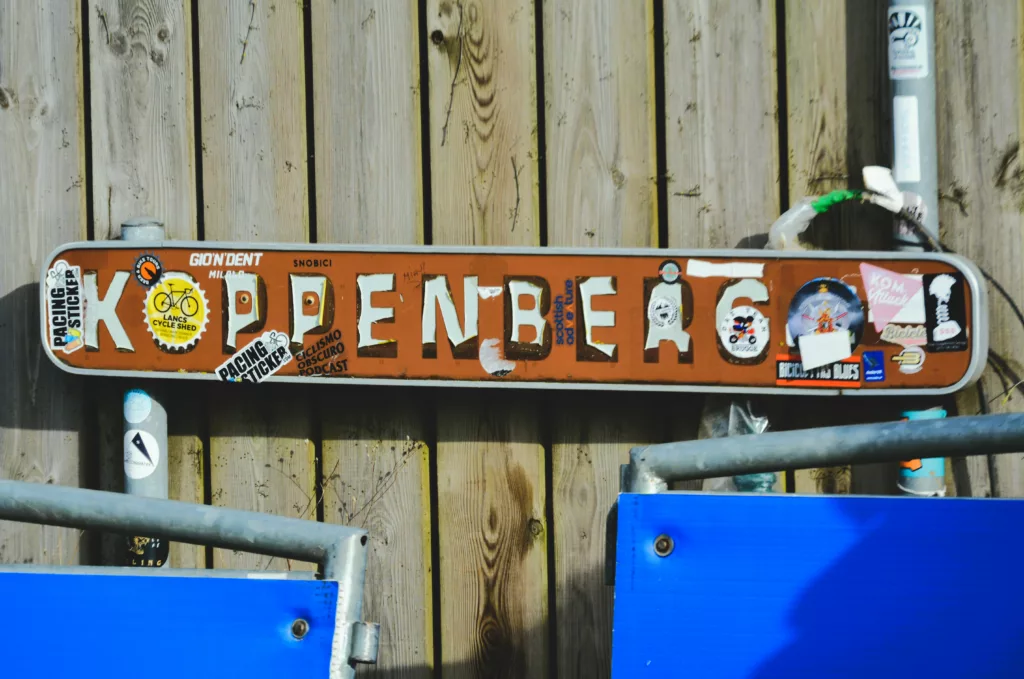
Staying in Flanders
The Flandrien Hotel is situated in Parike, between Brakel and Geraardsbergen, and caters for cyclists of all levels looking to explore Flanders. Run by Jamie Anderson and Bernard Moerman, it is a perfect place to base yourself in Flanders. From completing the Tour of Flanders sportive to pro teams, there’s plenty to keep everyone happy. The likes of Pauwels Sauzen (with Eli Iserbyt and Michael Vanthourenhout) have been recent stayers, with the AG Insurance-Soudal Quick-step team also visiting for a stay. There is plenty in the buffet breakfast to make sure you’re appropriately fuelled for the day’s riding. I made particularly liberal use of the coffee machine to get my pre-ride caffeine fix.
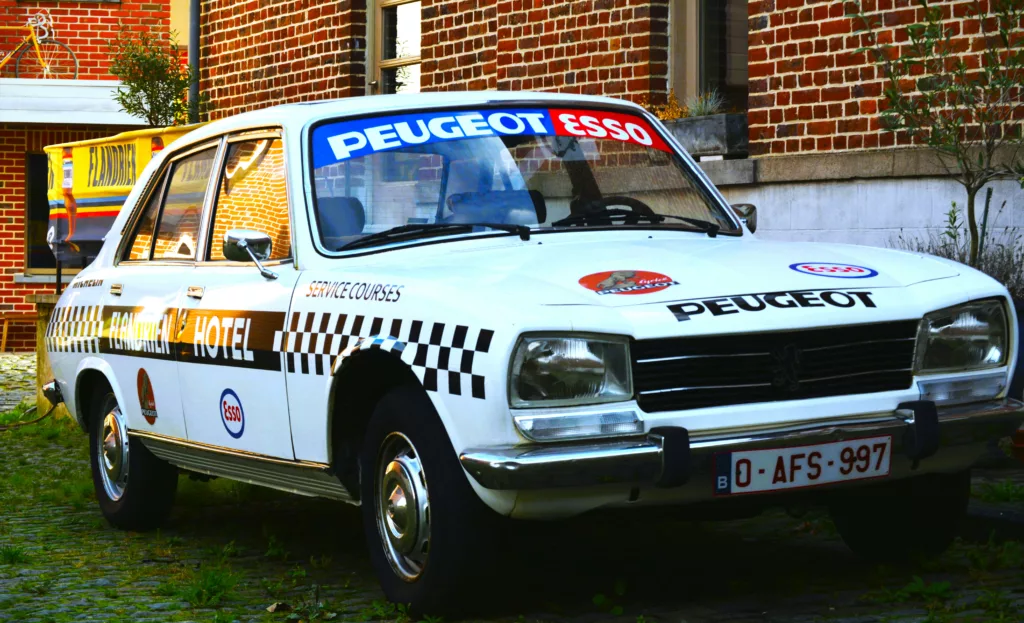
The stuff that you can’t find at a regular hotel includes the chance to jet wash your bikes after a mucky ride (a near certainty for large parts of the year), tools to fix those rattles or potentially more severe mechanicals, a secure bike lock-up storage and the chance to wash and dry your kit ready for the next day. Often in a chain hotel, you’ll be giving your kit the bathroom sink scrub wash and then trying to balance it all onto the heated towel rail. Not forgetting the obligatory track pump to make sure you’ve got the correct pressure in the tyres for the tough Flandrian roads. You generally will want a few psi less than what you ride at home to cater for the cobbles, the concrete road joins and all the other rough features. Bike hire is available too, particularly useful for those flying into Brussels airport nearby who don’t want to move the earth on their trip to Flanders.
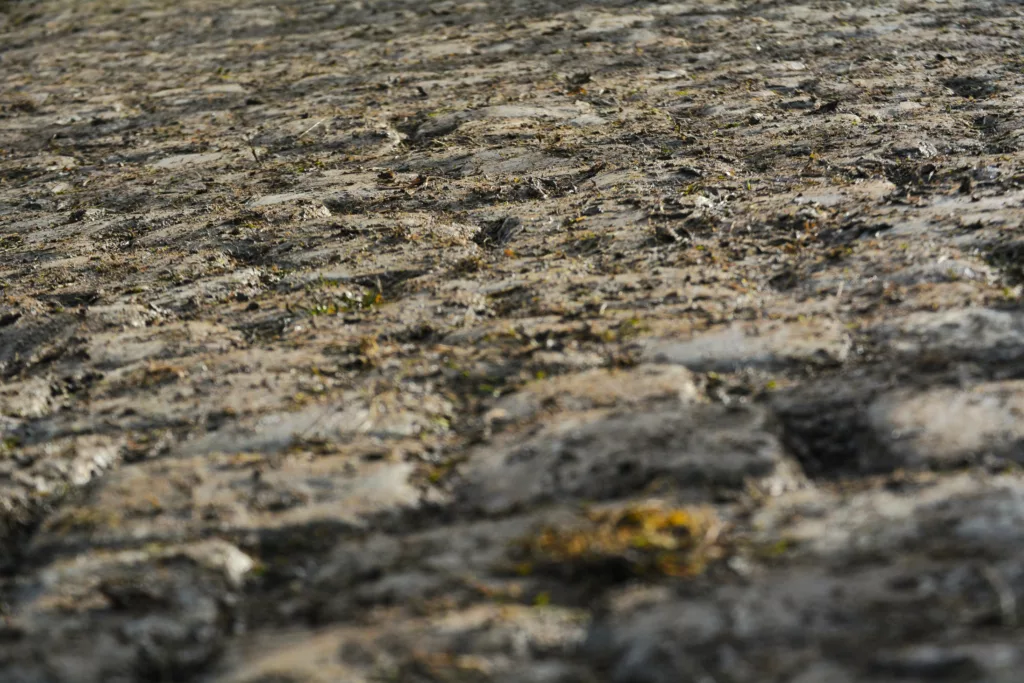
The location is perfect for tackling the Muur van Geraardsbergen, after a few kilometres you’re at the famous cobbled slopes ready to tackle the gradient to the summit. Fans of the old Tour of Flanders route and the modern-day Omloop van Nieuwsblad route can push on to the Bosberg before making a turn back westwards to find more of the hellingen. Oudenaarde is also not far away either, albeit in the opposite direction, and from there there are plenty of climbs to tick off. From the tarmac-covered Edelareberg to the broken-up cobbles at the base of the Molenberg it’s possible to go up and down the same ridge multiple times to get the climbing metres in.
Flandrien Hotel cycling collection
It’s worth a visit just to see the collection that has been amassed within the buildings of the Flandrien Hotel. The collection boasts items primarily from the last 30 years, so those people about to hit 40 who have been following cycling for a long time will recognise the frame shapes and team names from the 90s with a sense of nostalgia. There’s definitely a consistent nod to the Saeco team which was led by sprinter Mario Cipollini in his glory days. The red train was a feature on the flat stages in the first week and a half of the Grand Tours in that period. Telekom and T-Mobile also feature highly in one corner, the distinctive pink and black colours of that team were a favourite of mine at the time as the 90s turned into the 00s. You can see the development of time trial bikes from some of the early versions which might be considered naive now, to some of the funky flowing shapes that you’d expect more on a triathlon bike in the modern age. Ultimately though, there are plenty of absolutely stunning pieces and a piece of history everywhere you look.
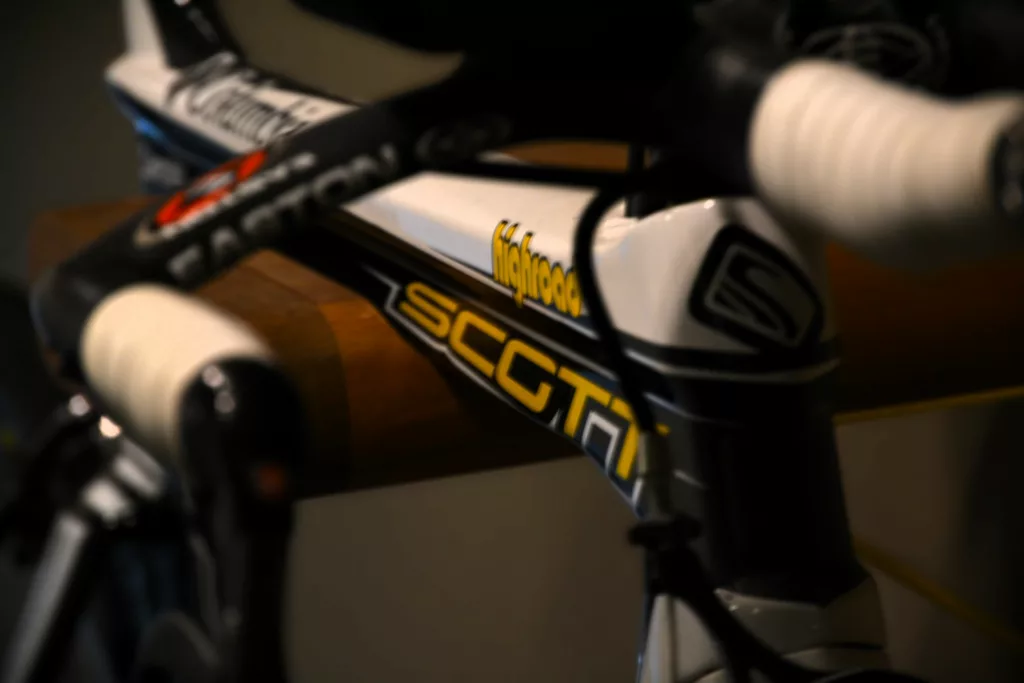
More recently, names like Mark Cavendish, Tom Boonen and Niki Terpstra are featured. Cavendish the joint-winningest rider of stages at the Tour de France and a world champion, Boonen another former-world champion & 7-time monument winner and finally Terpstra who won 2 prized monuments of De Ronde and Paris Roubaix but was often overshadowed by his illustrious teammate in Tom Boonen.
